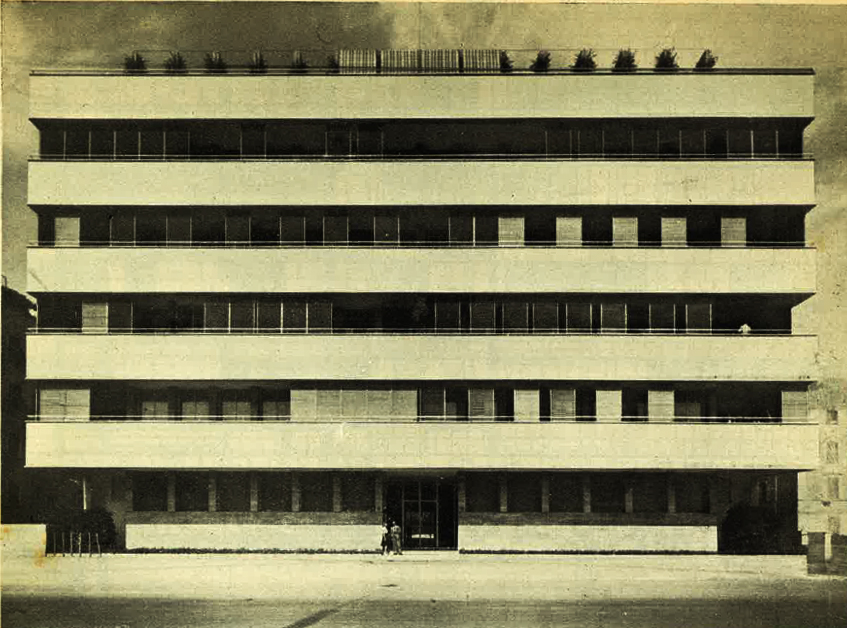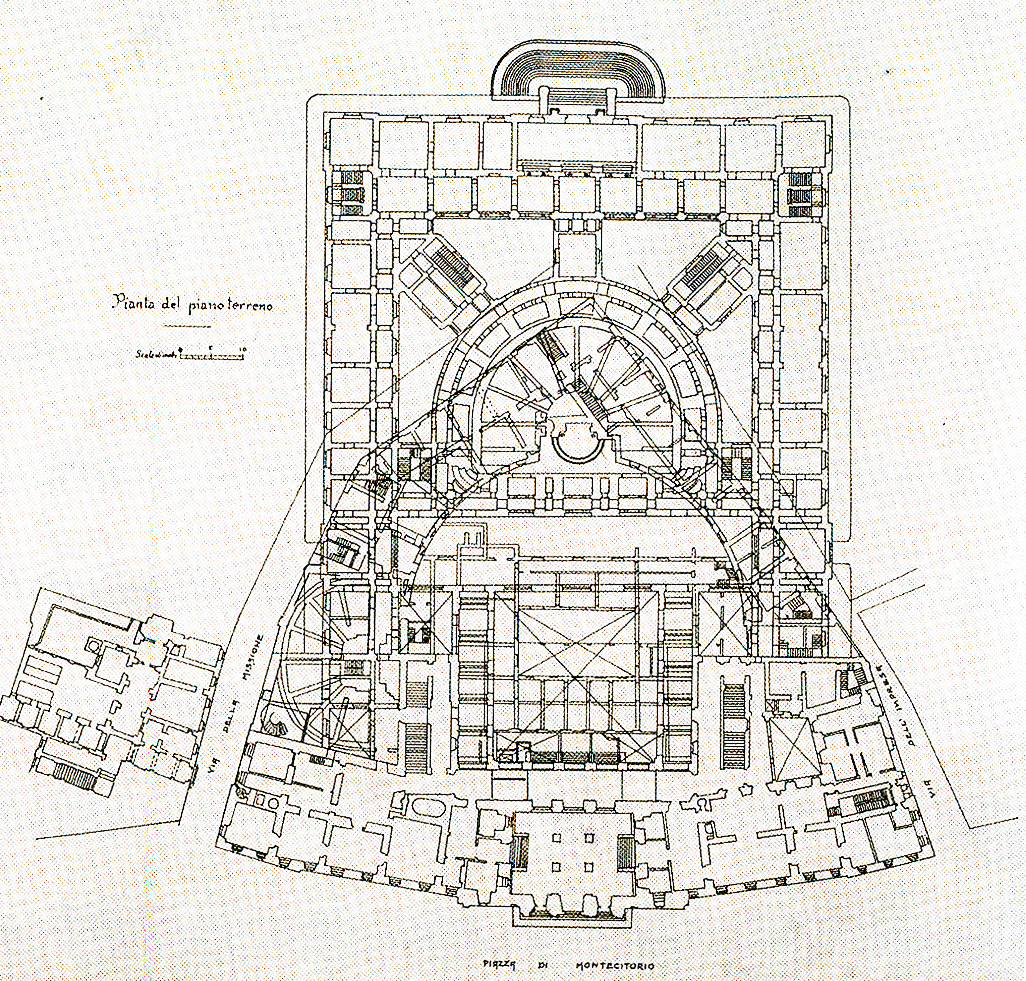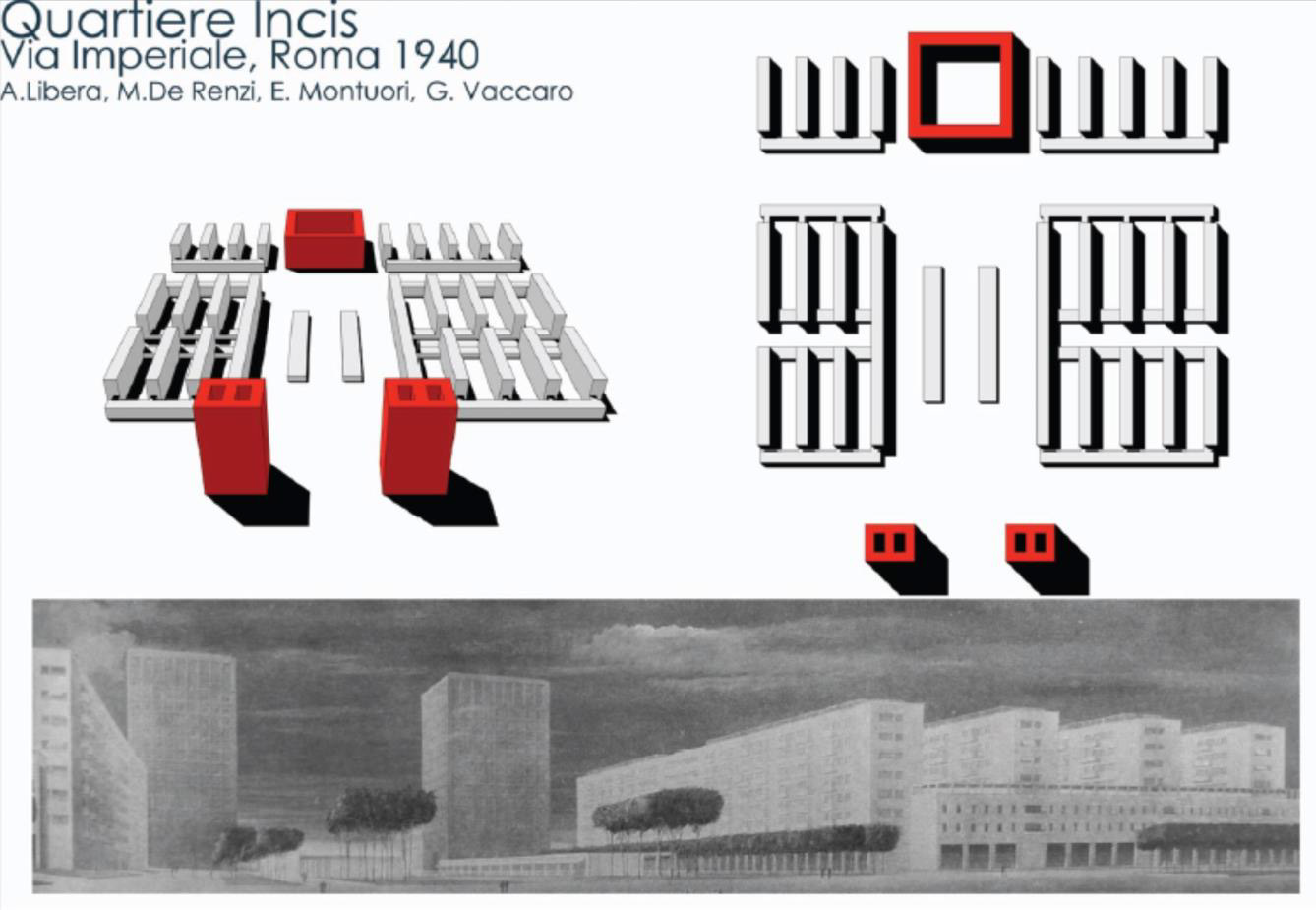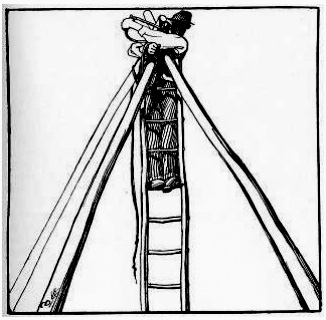S.Muratori
UNA PALAZZINA IN ROMA SUL LUNGOTEVERE
in “Strutture” n°2, 1947
apri file :
saverio muratori_Furmanik_Strutture n.2 luglio 1947

in “Strutture” n°2, 1947

Prof. Giuseppe Strappa

This article proposes the study of the Italian Chamber of Deputies transformation (from the first headquarters in Turin, then in Florence and finally in Rome) as a process that starts from the existing buildings and transforms them into a new architectural organism by “knotting”. This term, which effectively indicates, in my opinion, one of the most interesting and fertile phenomena in the modern urban renovation, is not commonly used in urban morphology studies and needs some definition. I will try to clarify, first of all, what I mean by this word.
By “knotting” I mean, in general, the outcome of the constructive action of connecting different elements, or entire systems, to each other in order to shape a spatial node[1] within an architectural structure, often closing a space and tying it to the elements that surround it, usually consisting of a series of rooms. It is the passage, in other words, from a special serial organism to a nodal one through the formation of a central “nodal” space that “knots” the existing structures that become “collaborating”.
Many types of modern buildings are formed by knotting, generated by the dialectic between enclosing and covering a space.
In the ancient world, clear forms of knotting developed with the transformations of the forum and the formation of basilicas.
But the knotting process is above all at the base of the formation of many modern building types characterized by the presence of a central dominant space, where the transition of the open space into a nodal one occurs through the reuse of existing buildings arranged, around courtyards or cloisters surrounded by arcades, as in convents or palaces.
The initial formation of the Italian palazzo, for this is most interesting here, takes place through recasting, renovations, integrations of pre-existing houses. The fundamental process is the overturning of the external routes inside, which transforms a part of the fabric in a building and that reconstructs within it the characters of the urban fabric.
The palazzo is, therefore, a building type predisposed, one could say, to the densification of its center, to the knotting. Note how the knotting process does not consist in the simple covering of spaces, but in a sort of “genetic mutation” that originates new forms of buildings. An obvious example is the formation of large postal buildings at the end of XIX century, through the knotting of serial spaces, reused for offices and services, around the counter hall, a large public hall that becomes a mediation space between city and building.
Many of the largest XIX century postal buildings are organized on layout based on the palazzo type, such as the German ones organized around a vast open Hof (so in Wroclaw, Potsdam) but also protected by a transparent cover, as in Berlin.
In Italy, even at the beginning of the XX century, the same manuals still recommended considering the counter hall as a “spacious courtyard all covered in glass” (Donghi 1905).
[1] By node I mean a singular point of a continuum determined by the intersection of two continuous. The notion of “continuous” can be applied to the different scales, from the building to the territorial one: a “tectonic node” can be constituted by the intersection of two continuous walls; an “urban node” can be constituted by the intersection of two routes. Each component of a structure, connecting with the others, determines a nodality (knot quality) of different degree in relation to the congruence of the relationship established between the components and its scale (CANIGGIA 1979, STRAPPA 1995).

BIBLIOTHECA ORIENTALIS – TRANI
CLICK HERE La parte elementare della città_REV

ABSTRACT – The paper reflects on some methodological and operational experiences carried out in the last century and also on the notion of “elementary part” as a method of construction of the residence in the contemporary city in relationship to the nature. The discourse, moving from the Enlightenment’s antecedents as the Squares and Crescents or through the analysis of some projects by the masters of the Modern Movement – also as a critical review of some of his initial assumptions – tries to classify the practice of construction of the city that renounces to the compact city system made by urban blocks, streets, squares and gardens and offers complex neighbour units with large extension and services and free portions of natural soil inside. This hypothesis, that opposing the nineteenth century city, is manifested in projects and constructions that significantly recover the principles of the classical city in a renewed relationship with nature / landscape and with the dialectics between residence and civil centres. An idea of “open and polycentric” city able to contrast the spread of the nebulized city, but without proposing a mere densification but identifying certain repeatable units able to absorb the fragments of the sprawl of the contemporary post-metropolis. Furthermore, this hypothesis can be applied also in some areas of the consolidated city to reintroduce, in its core, selected portions of nature.
The proposed classification is divided into the following sections:
– The classical cities as polycentric city;
– The compact city as unique or whole artifact;
– The city of the Enlightenment: from the square to the courtyard blocks;
– The city of the Modern Movement: utopias, principles and methods;
– The new dimension: quartal, quadras, urban sectors;
– Examples by the masters: Le Corbusier/Hilberseimer/Mies/May;
– The neighbourhood as a self-sufficient part: Libera/Cosenza;
– The idea of the city as set of defined parts: Rossi/Aymonino;
– The idea of polycentric city and elementary part: Monestiroli;
– Development prospects in the periphery and in the consolidated city: Bisogni.
The suggestion structure is defined by investigation of the logical urban composition and by paradigmatic examples taken as reference. CLICK HERE La parte elementare della città_REV

Duilio Cambellotti, L’inizio (The beginning).
The awareness of being able to use primary and universal characters in new architectural organisms, built with innovative techniques, responding to new needs and aesthetic values, constitutes the essence of the transition of European architecture to modernity. Buildings constructed according to these principles represent the vast majority of the renewal of cities in the first forty years of the XXI century. The modern movement experiments, even if useful to explore new ways, are, in fact, a minor and not fundamental part in the real urban transformations, above all in the areas of more rooted masonry-plastic culture.
This explains. for example, how it was possible such an evident continuity in the development of architecture in Italy in the interwar period, even in political conditions inducing a rhetorical interpretation of the historical heritage.
These are durable building organisms, using architectural layouts that are still vital precisely because they have not conformed, over time, to a specific function. They are “generic” organisms in the etymological sense of the term, capable of generating whole families of multiple, new architectures.
Many modern buildings (such as universities, schools, postal buildings) tend in different ways, in continuity with historical processes, to form a society of solidary spaces linked by a common purpose and a common rule. This rule is indirectly derived from the transformation of fabrics, through the permanence of typical structures such as convents or palaces. The beginning of this modern process can be clearly identified in the “urban necessity” of linking the building to the external paths, tightening it, at the same time, around an open space that tends to become the true nucleus of the forming process.
Click here to continue reading cap 3 pdf KNOTTING